Take the plunge: outback, offroad and other fabulous places to swim
From the coast to the desert, dive in to these lesser-known swimming spots found across the land.
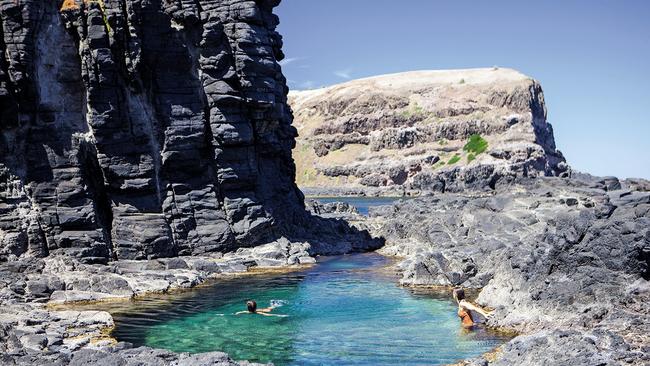
From the coast to the desert, dive in to these lesser-known swimming spots found across the land.
DALHOUSIE SPRINGS, SOUTH AUSTRALIA
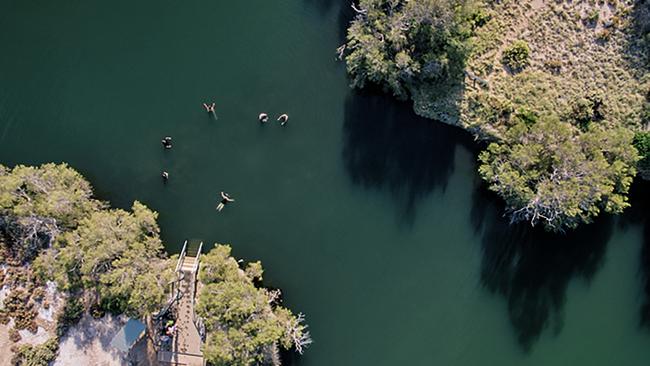
Located in Witjira National Park on the western fringe of the Simpson Desert, Dalhousie Springs is probably one of the most remote places any of us will ever swim (or drive to). This group of 60 springs represents only a tiny fraction of the Great Artesian Basin, the world’s largest and deepest artesian system. Water at this location has likely travelled thousands of kilometres over about a million years to reach the surface. After days of driving through the hot, dry desert on corrugated, unsealed roads, the thermal pool makes for welcome respite. Main Pool is the only designated swimming hole in the area. Though it is surrounded by dense, wetland vegetation, it can be easily accessed via stairs on the water’s edge. The temperature sits at a reliable 38C year-round, making it hospitable for all, most notably the six species of native fish in it. If you sit still long enough they will give you the full spa treatment, nibbling dead skin from any exposed part of your body. Dalhousie Springs sits at a crossroads of the Oodnadatta Track, French Line, Rig Road and Simpson Desert Track. On any given day there will be families in dusty caravans, grey nomads in custom 4WDs, and convoys of motorheads on the ultimate outback adventure with mates. Most people only stay a night before getting back on the road but not before taking a late-afternoon or early-morning dip. However long you stay, you’ll emerge from the water feeling rejuvenated.
Best time to visit Year-round, but the cooler dry season (April to October) is best.
Access Roads are unsealed and generally rough. A 4WD is strongly recommended.
Must bring Food and water for a couple of days’ travel, and a spare jerrycan with fuel. There are no supplies available nearby. Camping is free.
-
WHITES BEACH, NSW
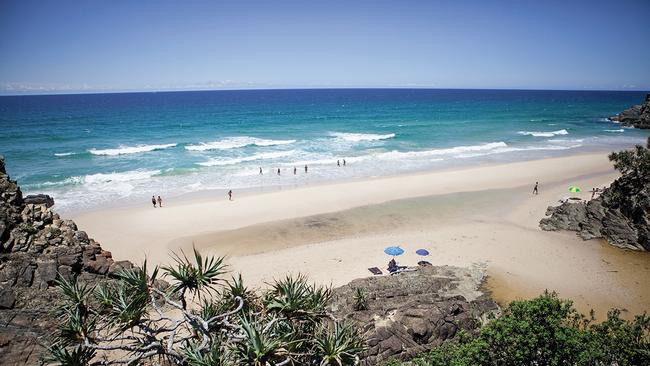
The north coast of NSW near Byron Bay is so highly travelled it’s hard to imagine there being any secret beaches. Whites Beach might be as close as you come to some seclusion in this area. Just out of Broken Head, this protected bay has a real sense of discovery about it, taking you down through subtropical rainforest to a beach of white sand and crisp, clear water. Visiting Whites early in January, we see young kids with their parents arriving with pristine boogie boards tucked under their arms, fresh from Christmas. With only a little bit of swell getting in, this beach seems like the perfect place to bodysurf. On a big swell, though, we’re sure it can get pretty wild on this unpatrolled strip. At the south side of the beach there are caves and rock pools to explore. Nearby, fresh water creeps over rocks from a spring, creating a sandy stream down into the ocean. Though our secret beach fantasies fade quickly when holidaying sun-seekers begin filling up the sand, the atmosphere is high. People settle in for the day at Whites because this is what summer holiday dreams are made of.
Best time to visit Summer during low to mid-tide. At high tide the water washes up over the beach, so there’s nowhere to sit.
Access Easy. The narrow, hilly, well-maintained unsealed road will take you to the trailhead. It’s a short walk from there.
Must bring Shade; there isn’t much around.
-
BUSHRANGERS BAY, MORNINGTON PENINSULA, VICTORIA
The basalt coastline of Bushrangers Bay is unlike anywhere else in the area, or even the state. Volcanic black rocks emerge from clear blue water. Deep pools are filled at high tide and slowly warm throughout the day. Our eyes popped out of our heads when we saw this secret spot featured in the 2009 film adaptation of Where the Wild Things Are. Indeed, you will see lots of kangaroos if you arrive early in the morning. We start our trip from the Cape Schanck Lighthouse carpark, from where it is a 3km one-way walk to Bushrangers Bay. The trail eventually emerges on to the beach, which is exposed to a constant barrage of swells from the south. We prefer the safety and beauty of the nearby tidal rock pools. Follow the beach east towards the rocky headlands. The most prominent feature is Elephant Rock and the best pools are distributed around its base. Water is always clear here and often a few degrees warmer than the ocean. It’s Victoria’s version of a spa bath. This is a low-tide-only spot, so make sure rogue waves aren’t crashing into the pools before you jump in. Natural baths come in many shapes and sizes, some small enough just for one, but all with million-dollar views.
Best time to visit Low tide on a hot summer’s day when a northeasterly wind is blowing.
Access Easy. It’s a 40-minute walk along a well-defined path to the beach.
Must bring Lunch, and lots of water. It can get stinking hot among the black rocks.
-
CASTLE ROCK, WESTERN AUSTRALIA
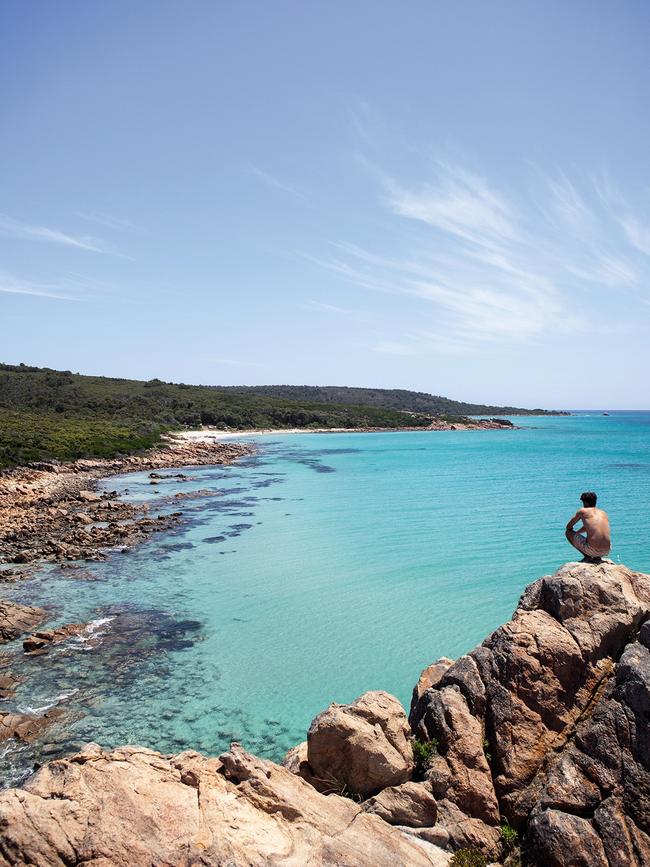
All of our favourite places to swim have some unique feature that makes them stand out. In a country full of beautiful beaches, white sand and clear water are just starting points. Here, in the southwest corner of WA, the towering burnt-orange granite rocks stand in vivid contrast to glassy blue water and sky. We were immediately drawn to Castle Rock at the southern end of the bay on our first visit, and have kept returning to explore every piece of it. Despite being only 2km from Dunsborough, this beach gets far less attention than nearby Meelup or Eagle Bay. Castle Rock looms high above the scrubby bush and is one of the tallest features in the area. On a warm day you can spend hours swimming around the boulders, lounging in rock pools, climbing, and jumping into the sparkling blue water. It is secluded, peaceful and, dare we say. romantic. We like to sit on top of the rock in spring and welcome the arrival of humpback whales. From about September to November pregnant females come into Geographe Bay to calve. The little families stay close to the shore, no doubt drawn to the warm, calm waters for all the same reasons as us.
Best time to visit December to February.
Access Easy. A 20-minute walk along the coast from Dunsborough or a quick drive. The beach is only a couple of metres from the trail and carpark.
Must bring This is a prime place for a barbecue, so plan ahead: we strongly recommend a stop at the Bunbury Farmers Market (2 Vittoria Road, Glen Iris) for supplies.
-
GLEN HELEN GORGE, NORTHERN TERRITORY
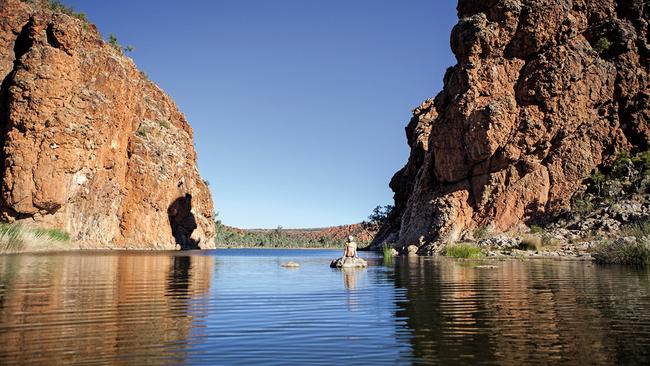
In a region defined by ephemeral rivers and waterholes, Glen Helen Gorge always has water, making it one of the most reliable places to take a dip. It benefits greatly from not being the closest swimming hole to Alice Springs, so it never seems as rowdy or busy as other places in the West MacDonnell Ranges. Think Bronte, rather than Bondi. Most swimmers congregate around the main pool, which feels like an open amphitheatre with a river running through it. Hot days can get busy here, but you can escape the crowds by swimming downriver to hidden beaches. Many coastal dwellers will discover (too late) that Central Australia is freezing cold in winter. Who knew? Those perfect blue skies and red rocks look so warm in photographs. We first visited in July and were limited to a series of daring plunges punctuated by whoops of giddy laughter and frantic scrambling for the towel. Tourist high season is May to September, but when the temperatures rise and all the visitors go home, the locals emerge to reclaim their swimming holes. It’s no wonder nearly every waterhole is a sacred site to the indigenous Western Arrernte people, nor that many of these pools provided constant inspiration for Albert Namatjira’s paintings.
Best time to visit December to April.
Access Enter through Glen Helen Homestead. Follow the sandy trail about 300m downstream to get to the main swimming hole.
Must bring A great book. Tracks by Robyn Davidson is a classic adventure memoir featuring this landscape.
-
ARTHUR BAY, MAGNETIC ISLAND, QUEENSLAND

A 25-minute ferry from Townsville will land you on this relaxed, mountainous and secluded island. Sunshine and 30C is what most people expect around here, and you are pretty much guaranteed to get it. A single road winds its way along the perimeter of the island, with regular buses shuttling people between the four municipalities — Picnic Bay, Nelly Bay, Arcadia and Horseshoe Bay. It’s easy to jump on and off as you please. There are so many spots to swim you rarely share a beach with more than a handful of people. A short walk took us through open eucalyptus forests, past grunting koalas, down to Arthur Bay. The bay is bounded on both sides by granite headlands, where tall hoop pines find their footing among rounded boulders. A semi-permanent creek makes a natural wading pool at the back of the bay, shaded by pandanus trees. The main attraction, however, is the intense blue-green water of the beach. We were stinging for it by the time we reached the shore and our clothes have never come off so quickly. Underwater visibility is excellent here and we spent much of the day swimming around to the fringing reef on the north end of the bay.
Best time to visit May to October.
Access Easy. Ferry and public transport to trailhead. A paved path will take you to the beach.
Must bring A plan. No camping on Magnetic Island, so you’ll need to arrange accommodation.
-
COCKLE CREEK, TASMANIA
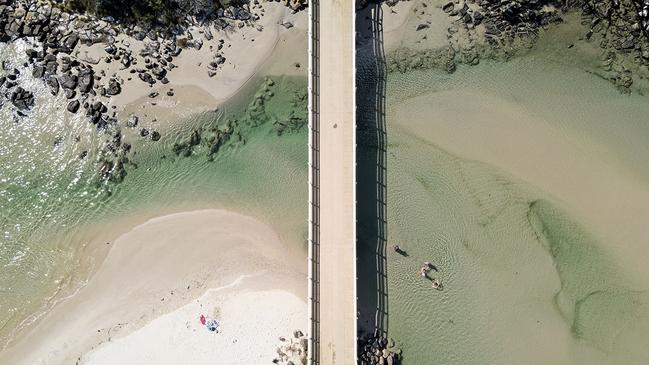
This remote settlement is the last stop on Australia’s southernmost road, and truly seems like the end of the earth. Standing here, you are closer to Antarctica than to Cairns. The roaring forties travel virtually unabated to deliver the cleanest air in the world and non-stop weather to this part of Tasmania. We’ve seen Cockle Creek go from 16C with horizontal rain to 30C, and back again, all within 24 hours. The sky is always putting on a show, but on a sunny day you cannot help but be drawn into the astonishingly clear water. The natural harbour of Recherche Bay is an oasis of calm. Few waves ever penetrate it and those daring enough to take the cold plunge will have kilometres of white-sand beach all to themselves. Our top spot, however, is in the tidal inlet. Because the water is relatively shallow here, it is dramatically warmer than anywhere else. A few rustic shackies line the bay but most visitors camp as there are no fees, provided you respect the one-month limit. While we didn’t stay a full term, it was easy to let the days slip by. Cockle Creek was the remedy for a sickness we didn’t know we had. It’s a place to be immersed in ancient life and healing water.
Best time to visit December to March, when the water is at its warmest and the weather is most predictable.
Access Easy. Turn off the Huon Highway 2km north of Southport at Hastings Cave Road; keep driving until it dead-ends at Cockle Creek/Recherche Bay (about 24km). The last 10km is unsealed.
Must bring A fuel or gas stove for cooking. No fires allowed.
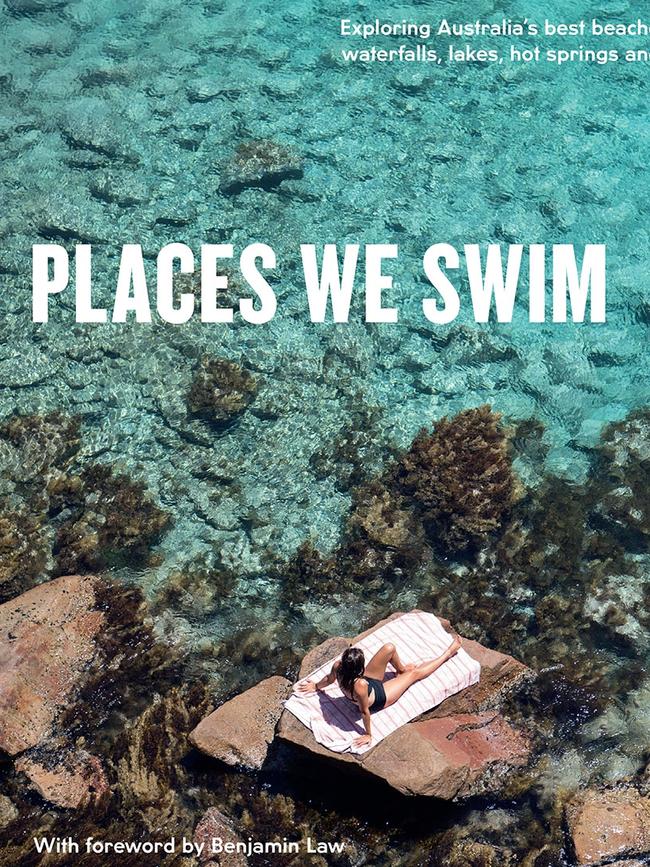
This is an edited extract from Places We Swim by Caroline Clements and Dillon Seitchik-Reardon (Hardie Grant Travel, $39.99). Available in stores now.

To join the conversation, please log in. Don't have an account? Register
Join the conversation, you are commenting as Logout